The Rubber Plant (Ficus elastica) is a popular indoor houseplant, cherished for its glossy, dark green leaves, upright growth, and low-maintenance nature. Native to Southeast Asia, this tropical plant can grow impressively tall indoors, adding elegance, air-purifying benefits, and a sense of tranquility to your home.
For beginners, cultivating a rubber plant indoors may seem daunting, but with the right care, these plants thrive beautifully, transforming any living space. This guide provides a step-by-step approach to indoor rubber plant care, including selection, planting, watering, light requirements, pruning, fertilization, and troubleshooting common issues.
Why Choose a Rubber Plant for Indoor Spaces?
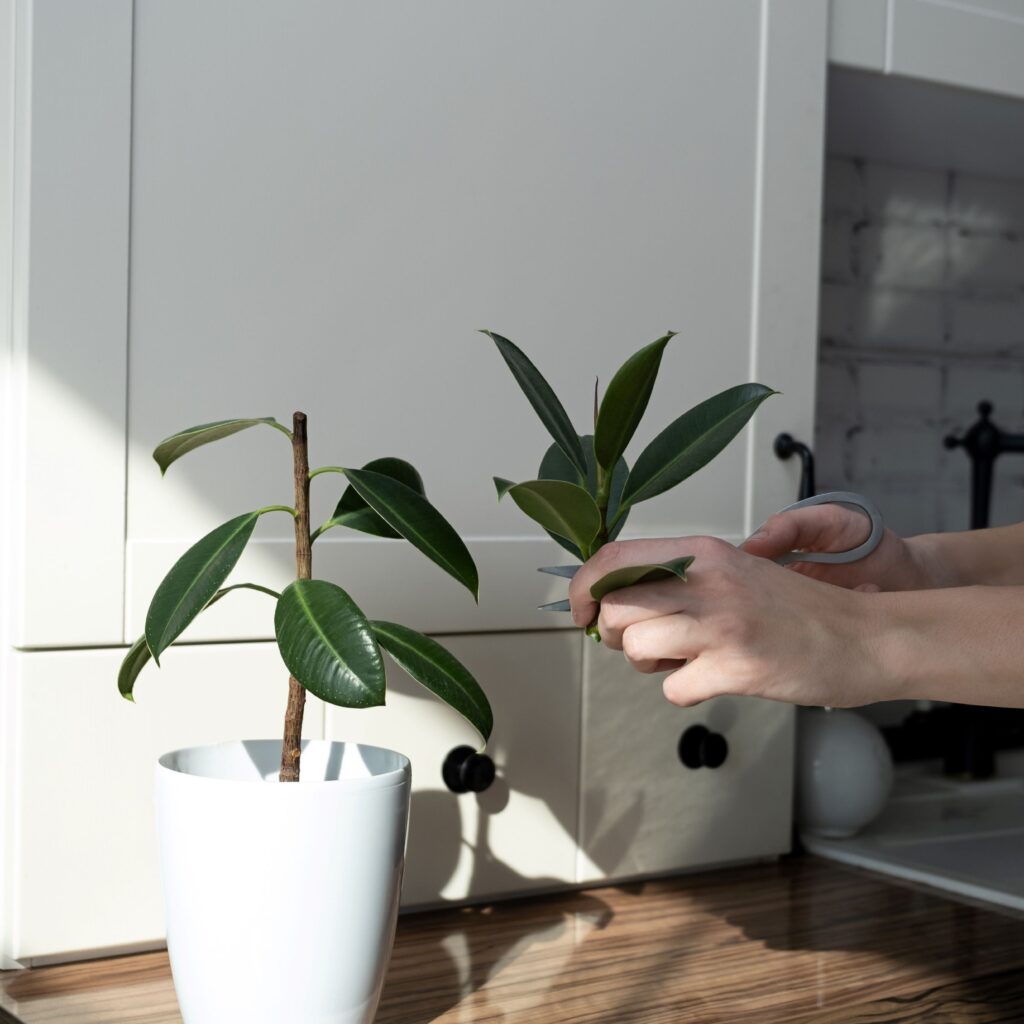
Rubber plants offer several advantages:
- Air Purification: Rubber plants absorb toxins such as formaldehyde and improve indoor air quality.
- Low Maintenance: Hardy and adaptable, they thrive in a variety of indoor conditions.
- Aesthetic Appeal: Large, glossy leaves enhance home décor.
- Longevity: With proper care, rubber plants can live for decades.
- Compact Growth: Suitable for apartments, offices, or larger rooms depending on container size.
Step 1: Selecting the Right Rubber Plant Variety
Rubber plants come in several varieties suitable for indoor growth:
- Ficus elastica ‘Robusta’: Strong, thick leaves; highly resilient.
- Ficus elastica ‘Burgundy’: Dark red, glossy leaves; adds vibrant color indoors.
- Ficus elastica ‘Decora’: Large, dark green leaves; grows tall with proper pruning.
- Ficus elastica ‘Tineke’: Variegated leaves with cream and green patterns; adds elegance to interiors.
Choose a variety based on desired leaf color, size, and space availability.
Step 2: Choosing the Right Container and Soil
Rubber plants grow best in well-draining soil and appropriately sized containers:
- Container:
- Use pots with drainage holes to prevent waterlogging.
- For young plants, a pot slightly larger than the root ball suffices.
- Repot every 2–3 years to accommodate growth.
- Soil Mix:
- A mix of potting soil, perlite, and peat moss ensures aeration, drainage, and nutrient retention.
- Avoid heavy clay soils, which can cause root rot.
Step 3: Providing Proper Light Conditions
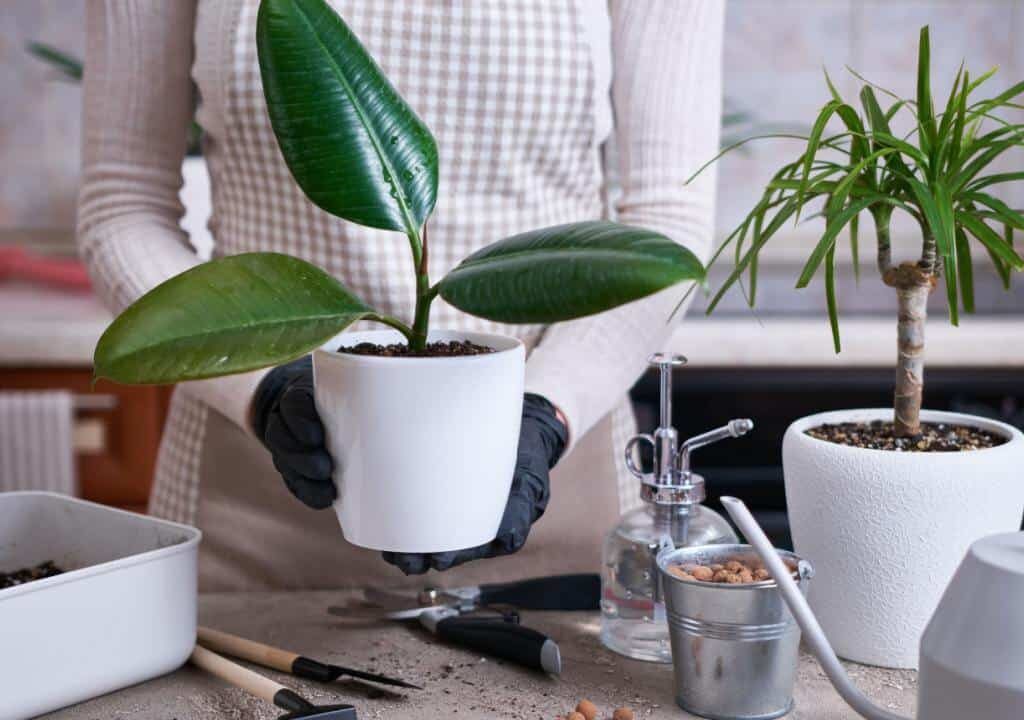
Rubber plants thrive under bright, indirect sunlight:
- Place near east- or south-facing windows.
- Avoid direct afternoon sun, which can scorch leaves.
- In low-light areas, the plant may grow slower, and leaves may lose some vibrancy.
- Rotate the plant occasionally to ensure even growth and leaf color.
Step 4: Watering Guidelines
Watering is critical to maintain healthy foliage and root systems:
- Frequency: Water when the top 1–2 inches of soil are dry.
- Technique: Water thoroughly until excess drains from the bottom.
- Avoid Overwatering: Excess water leads to root rot; ensure soil is not soggy.
- Humidity: Rubber plants enjoy moderate humidity. Mist leaves occasionally or place a humidifier nearby during dry seasons.
Step 5: Fertilizing Rubber Plants
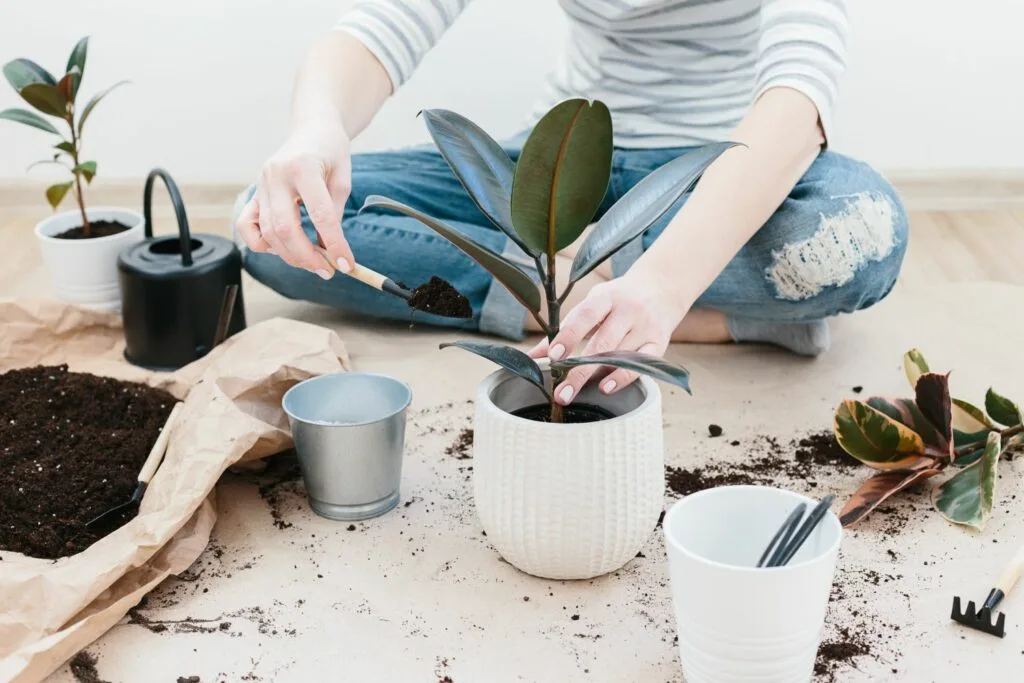
Proper fertilization promotes healthy growth and vibrant leaves:
- Growing Season: Fertilize monthly during spring and summer with a balanced houseplant fertilizer (10:10:10).
- Dormant Season: Reduce or stop fertilization during fall and winter when growth slows.
- Organic Options: Compost tea or diluted liquid fertilizers work well for natural growth support.
Step 6: Pruning and Shaping
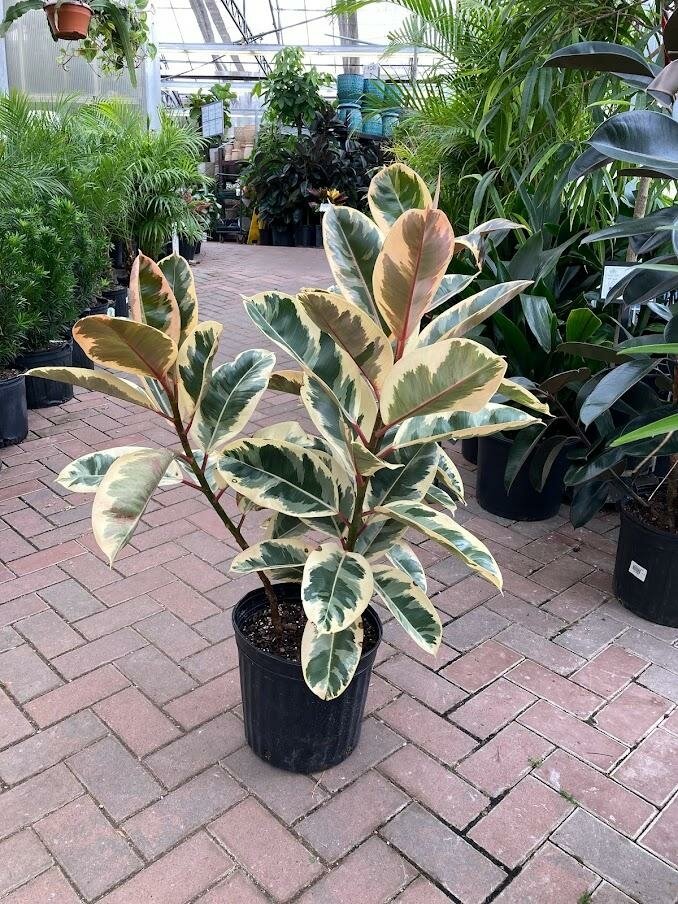
Pruning maintains plant shape and encourages bushier growth:
- Trimming: Remove dead, yellowing, or damaged leaves regularly.
- Shaping: Cut back tall stems to control height and promote lateral branching.
- Tools: Use clean, sharp scissors or pruning shears to prevent infection.
- Tip: Pruning is best done during the growing season for quicker recovery.
Step 7: Repotting Your Rubber Plant
Repotting provides room for root growth and ensures long-term plant health:
- When to Repot: Every 2–3 years or when roots emerge from drainage holes.
- Method:
- Remove the plant gently from its current pot.
- Loosen compacted roots slightly.
- Place in a slightly larger pot with fresh potting mix.
- Water thoroughly after repotting.
Repotting also allows inspection for root rot, pests, or other issues.
Step 8: Managing Common Pests and Diseases
While hardy, rubber plants can face minor pest or disease problems:
- Pests:
- Spider mites, mealybugs, and scale insects are common.
- Wipe leaves with a damp cloth or apply insecticidal soap.
- Diseases:
- Root rot due to overwatering.
- Leaf spot or fungal infections.
- Ensure proper drainage and avoid excess humidity around the soil.
Step 9: Propagation Techniques
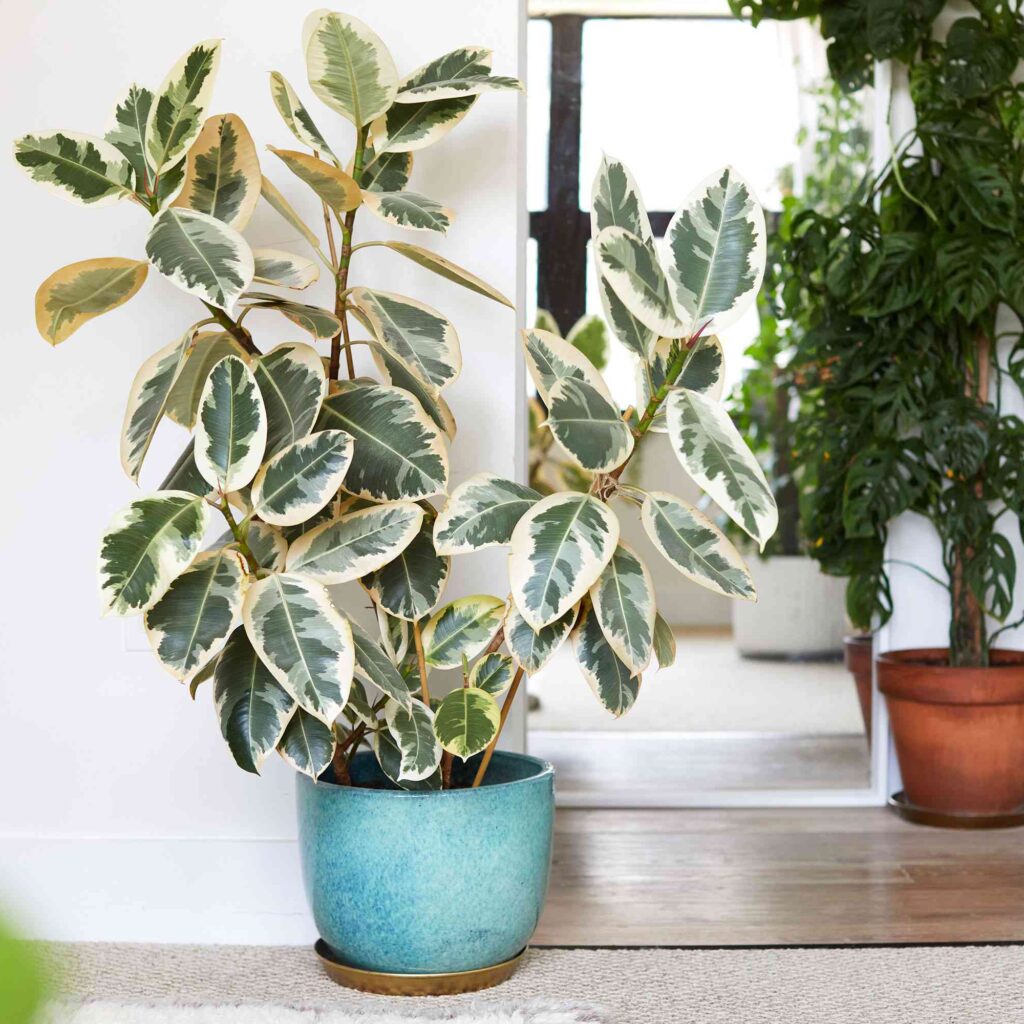
Rubber plants can be propagated via stem cuttings:
- Take a healthy stem with at least two leaves.
- Cut just below a node and dip in rooting hormone.
- Plant in moist, well-draining soil.
- Maintain warmth, humidity, and indirect light until roots develop (2–4 weeks).
Propagation is ideal for expanding your indoor collection or gifting plants.
Step 10: Enhancing Indoor Aesthetics with Rubber Plants
Rubber plants add visual appeal and functional benefits:
- Corner Plant: Large varieties fill empty corners and create height.
- Grouping: Pair smaller rubber plants with other indoor plants for texture contrast.
- Desk or Table Plant: Miniature or young varieties enhance office spaces.
- Air Quality: Regularly cleaned leaves improve oxygen levels and reduce indoor toxins.
Step 11: Tips for Long-Term Care and Growth
- Monitor Watering: Avoid over- or under-watering; maintain slightly moist soil.
- Provide Adequate Light: Rotate plants for uniform growth.
- Fertilize Regularly: Support lush growth during active seasons.
- Prune Strategically: Encourage bushier, compact growth for indoor spaces.
- Watch for Pests: Early detection prevents infestations from spreading.
- Maintain Humidity: Moderate indoor humidity supports leaf health and reduces leaf drop.
Conclusion
Rubber plants are elegant, resilient, and low-maintenance, making them ideal for beginners who wish to enhance indoor spaces with lush greenery. With proper attention to light, watering, fertilization, pruning, and pest management, rubber plants can thrive for years, offering air-purifying benefits, aesthetic appeal, and a sense of calm.
By selecting the right variety, providing a suitable container and soil, and following consistent care practices, even novice gardeners can cultivate healthy, glossy-leaved rubber plants indoors. Over time, these plants can grow tall, full, and magnificent, transforming any room into a vibrant, relaxing, and eco-friendly environment.
Growing rubber plants is not just about decoration—it is a journey in nurturing and observing nature indoors, providing satisfaction, learning, and beauty in everyday life.





